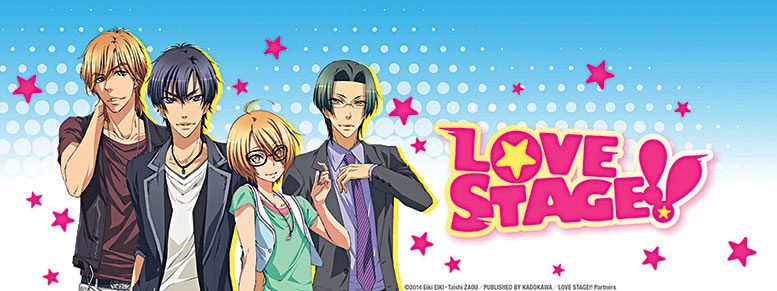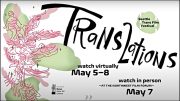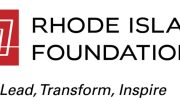Japanese animation is filled with LGBTQ+ themes, characters, embraces non-binary identity, asexuality
By: Audrey Cole/Reporter—
HOUSTON—Japanese animation, commonly referred to as anime, has a long history of being inclusive of the LGBTQ+ community, though the broader English-speaking world has largely been unaware of it, according to a professional of the industry.
“I’ve been in this field for many years, and I have always been surprised at the amount of LGBTQ+ characters and storylines scattered throughout the medium,” said David Wald, ADR Director, scriptwriter, and voice actor. “I believe there is an enormous audience in desperate need of the chance to hear a song of themselves in their entertainment, just like I did as a gay kid growing up …”
Normalizing queer
Anime featuring LGBTQ+ characters focuses on the storyline, and not exclusively on the LGBTQ+ status of the individuals, unlike many entertainment media in the West. Wald notes that it helps to dispel myths surrounding the LGBTQ+ community and “normalizes” various identities.
“For many years, anime has included an array of queer stories and representation,” Wald explained to The Rainbow Times. “Often, there’s an LGBTQ+ character featured in a main or supporting role of a title not otherwise centrally concerned with the queer experience. What’s miraculous about this manifestation of LGBTQ+ representation in anime is that, more often than not, and quite unlike most western media, such a character’s LGBTQ+ status is not their primary or singular contribution to the narrative.”
Although there has been a niche market for dubbed anime in the U.S. for decades, according to Wald, some popular titles are now tracking with major streaming networks such as The Cartoon Network, Netflix, and Amazon.
“In the vast ocean of anime coming from Japan, there are many queer stories and characters to be found,” Wald said. “I’ve long felt that it behooves my industry to find and feature these stories, to adapt them into English, and to market them directly to the wildly underserved and often poorly-represented LGBTQ+ community of the English-speaking world. Dragon Ball, Naruto, Attack On Titan, and My Hero Academia and films such as Your Name, Spirited Away, and Princess Mononoke, [show that] English-dubbed anime has become a rapidly growing presence in American entertainment …”
Anime, characterized by common stylistic features such as the use of bright colors, characters with unusually large, emotive eyes, and often themes associated with speculative fiction, is similar to many genres depicted in the entertainment industry and appeals to all ages.
“… Anime narratives cover vastly greater territory than just titles intended for young audiences,” Wald said. “It’s a medium unto itself, which includes every conceivable genre: horror, sci-fi, fantasy, drama, romance, comedy, adult material, etc. There’s something in anime to appeal to virtually any discerning viewer, regardless of their age or interests.”
Highlights sexual orientation, gender identity
Referring specifically to the LGBTQ+ community, Wald explained that subgenres of the medium pull sexual orientation and gender identify clearly into focus.
“There are countless anime titles which center on queer stories,” he said. “The sub-genres Yaoi and Shounen Ai feature stories about relationships between males. This includes titles like Love Stage!!, Hitorijime My Hero, Junjou Romantica, Yuri On Ice, and many others. The sub-genres Yuri and Shoujo Ai are hinged on romances between females. Titles like Bloom Into You, Sakura Trick, Citrus, and Kase San and Morning Glories are examples of these sub-genres.”
Although transgender identity is underrepresented in the current English adaptations of anime, Wald is working to change that.
“There’s an anime title, released some years ago, called Wandering Son, which features two trans school-age children who develop a deep friendship,” he said. “This title deals with trans issues in a way more authentic than most other anime. And, it’s rather breathtaking. So far, Wandering Son has not been adapted into English. That’s something I’d personally like to see rectified.”
Yet, affirming non-binary identity is a concept that Japan appears to be eons ahead of when compared to the U.S, according to Wald.
“Japan seems to have fewer hang-ups regarding gender fluidity in its storytelling than we do in the West,” Wald explained. “It’s quite common to see characters in anime dressing as the opposite sex … culturally, a man in Japan demonstrating feminine elements or a woman demonstrating masculine qualities is not ostracized like it is in the West. In fact, it’s often celebrated.”
LGBTQ+ Youth struggles
Not only does English-adapted anime offer promising entertainment and inclusion of the LGBTQ+ identity in an unsuspecting medium, Wald said, it can also be used to help LGBTQ+ youth who are on the edge to find solace in their identity.
“Queer Youth in the U. S. are deep in crisis,” he added. “Young people in the midst of coming to terms with themselves as queer people are still today kicked out of their homes or subjected to so-called conversion therapy [in many areas]. They attempt suicide at a rate of 30 percent higher than non-LGBTQ+ kids. They are ostracized and demonized in society at large.”
Through anime, Wald claims, it can ease a sense of “otherness” experienced by LGBTQ+ youth.
“I think that what today’s queer youth is really suffering from is a crippling sense of alienation, just as I was in those years,” he said. “The cure for alienation is commune, and I believe that by finding and featuring these [queer] titles, adapting them into English, and making them accessible to queer youth in the West, we can immediately help ease that pervasive sense of ‘otherness’ experienced by today’s queer youth.”
And, Wald speaks from experience.
“I needed these types of stories desperately in my youth, but most of the queer representation I found in the media of the 80s was lurid, stereotypical, and at best, incredibly reductive,” he explained. “I needed better stories.”
U.S. lags behind
Although queer stories have existed in anime for decades, the Western world has been slow to adapt them into English.
“Now, years later, I find myself working in a medium full of queer songs to sing, but my medium largely avoids adapting these stories into English for fear that their appeal would be too narrow,” said Wald. “My contention is that the LGBTQ+ population in the West outnumbers the existing American audience for anime by a multiple of 15 to 20. And I think that by featuring this material, we can help the LGBTQ+ community feel less alone, less ostracized, and less alienated. Perhaps we could even save lives.”
Onward Wald goes.
Working with Sentai Filmworks to write and direct their recent English adaptation of _Hitorijime My Hero_, a show centered on the budding relationship between two male couples is now available on HIDIVE, Blu-Ray and VRV streaming platforms.
Asexuality
But, the director didn’t stop there, pushing the “traditional” boundaries even further.
“We followed this [Hitorijime My Hero] with Bloom Into You, available on HIDIVE and VRV, a show which addresses a touching romance between two young women and also features an authentically rendered asexual character in its supporting cast, a rarity in any medium,” Wald explained.
However, the scriptwriter considers the star of the adapted world to be Love Stage!!
The “flagship entry in this undertaking” is found with “our English adaptation of Love Stage!!, a series which regards the relationship between a movie star at the height of his career and a shy, directionless college boy from an otherwise world-famous family of mega-stars,” Wald wrote to The Rainbow Times. “Their romance contains all the hallmarks of a classic American rom/com, while simultaneously illuminating aspects of the queer coming-of-age with both insight and humor.”
Universal struggles
The screenwriter said within each storyline there is a universal human connection, which helps break down barriers facing the LGBTQ+ community, one anime at a time.
“To de-stigmatize something, you first have to normalize it; to make it seem less anomalous,” Wald explained. “I believe that making the wealth of queer stories in anime accessible to western viewership will help show the English-speaking world examples of LGBTQ+ people having struggles with which virtually anyone contends at some point or another. We all had a first love we couldn’t fully understand. We’ve all felt the weight of social pressure and societal expectation. We in the LGBTQ+ community do not hold dominion over these struggles. They’re universal. To tell stories about how LGBTQ+ people uniquely navigate these struggles can help achieve understanding with our heterosexual and cisgender counterparts that simple conversation would take years to achieve.”
To view the English adapted anime referenced in this story and more, check out HIDIVE.com.
[This story was originally published in The Rainbow Times‘ July 4, 2019 issue]








No, big no on this one. This is one of the few times I’m gonna heavy disagree with this being anything that constitutes getting better. Yaoi/Yuri tropes are incredibly toxic. VERY TOXIC, this is part of the problem. This is part of why Japanese people have such a very toxic view of gay relationships.
Calling Yaoi/Yuri as positive queer attention is a huge step back. Please, please consider doing a little more research into the genre and really look at what messages they’re trying to send. Yaoi/Yuri as a whole are branches off of Hentai/Ecchi and are treated as such. Shonen/Shoujo-Ai is not a lot better. It’s kink, it is treated as kink. Gay characters as a whole are reflected truly terribly in it. And almost none of it is written by LGBT people.
If you want positive gay anime representation, unfortunately right now there’s very limited options. Number 6 is pretty good, and I’ve heard about a few new things hitting the shelves but almost all of them are sad stories about sad lives.